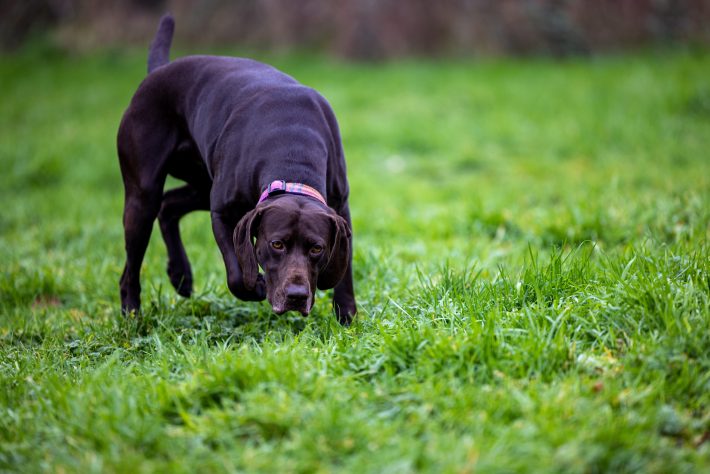Conservation detection dogs sniff out rare curlew nests
Conservation detection dogs are nearly twice as likely as humans to find curlew nests according to new research conducted by researchers in Northern Ireland. The researchers presented these preliminary findings at the British Ecological Society Annual Meeting in Belfast.

Once an iconic native bird ubiquitous to the Irish landscape, Europe’s largest wading bird, the curlew, is now threatened with extinction and disappearing from the Irish countryside. Over the last 40 years, the number of breeding curlew has decreased by 97% in Ireland and 82% in Northern Ireland. However new research conducted by Conservation Detection Dogs Northern Ireland, Queens University Belfast, and Erne Environmental Consultancy suggests the use of conservation detection dogs to find and identify curlew nests could be a pivotal turning point for curlew conservation.
In a trial pitting the abilities of humans against dogs to find curlew nests, the researchers found that Ziba (the conservation detection dog) and her handler found over 93% of nests, while human searchers only found 43.8% of nests on average.
As ground-nesting birds, curlews are vulnerable to predation. A key aspect of curlew conservation is ring-fencing identified nests, meaning quickly locating these nests is crucially important for the success of the species. It is hoped that if more nests can be quickly found and fenced, then more curlew chicks will survive and fledge.
Dr Caroline Finlay, business owner and head handler and trainer at Conservation Detection Dogs Northern Ireland, said: “For human searchers it can be incredibly difficult to find curlew nests due to the topography of the areas they live in and their ability to camouflage their nests. Detection dogs could be an important tool for helping human searchers as they don’t rely on being able to see the nests, but on their incredible sense of smell.”

In the trial the researchers placed fake curlew nests in two different habitat types (unimproved grassland and wetted marsh), challenging human searchers to locate them by sight. As dogs rely heavily on scent to locate objects, the researchers tested the conservation detection dog’s nest detection ability by placing getxent tubes in real curlew nests to absorb the odour. These tubes were then scatted across the same two types of habitats, where they released odour over time for the conservation detection dog and their handler to locate.
The researchers found that for both human searchers and Ziba the conservation detection dog, habitat type made no difference in their ability to locate the nests.
Caroline added: “The positive results from this study have now given evidence that’s detection dogs could be an extremely useful tool in helping find curlew nests and a trial using dogs, in partnership with RSPB, will be conducted in the next breeding season to look at possible disturbance of nests and how much faster a dog could be compared to human searchers at nest finding.”
Caroline stresses that even if the use of conservation detection dogs is found to cause adult curlews to abandon their nests, they could still be invaluable for headstarting projects, which are starting to take off in the UK and Ireland. These projects further decrease the chances of predators killing vulnerable young chicks or damaging eggs, by removing the eggs from the nest and raising them in captivity. The chicks are then returned to the wild once they near fledging. Their success relies on finding as many eggs as possible as quickly as possible, making the use of conservation detection dogs an excellent potential candidate to boost their success.
Dr Caroline Finlay presented this work at the British Ecological Society annual meeting. This work is currently unpublished. This conference will bring together over 1300 ecologists to discuss the latest breakthroughs in ecology.
BES 2024
Save the date of our 2024 Annual Meeting, taking place 10 – 13 December 2024 in Liverpool.
Like what we stand for?
Support our mission and help develop the next generation of ecologists by donating to the British Ecological Society.